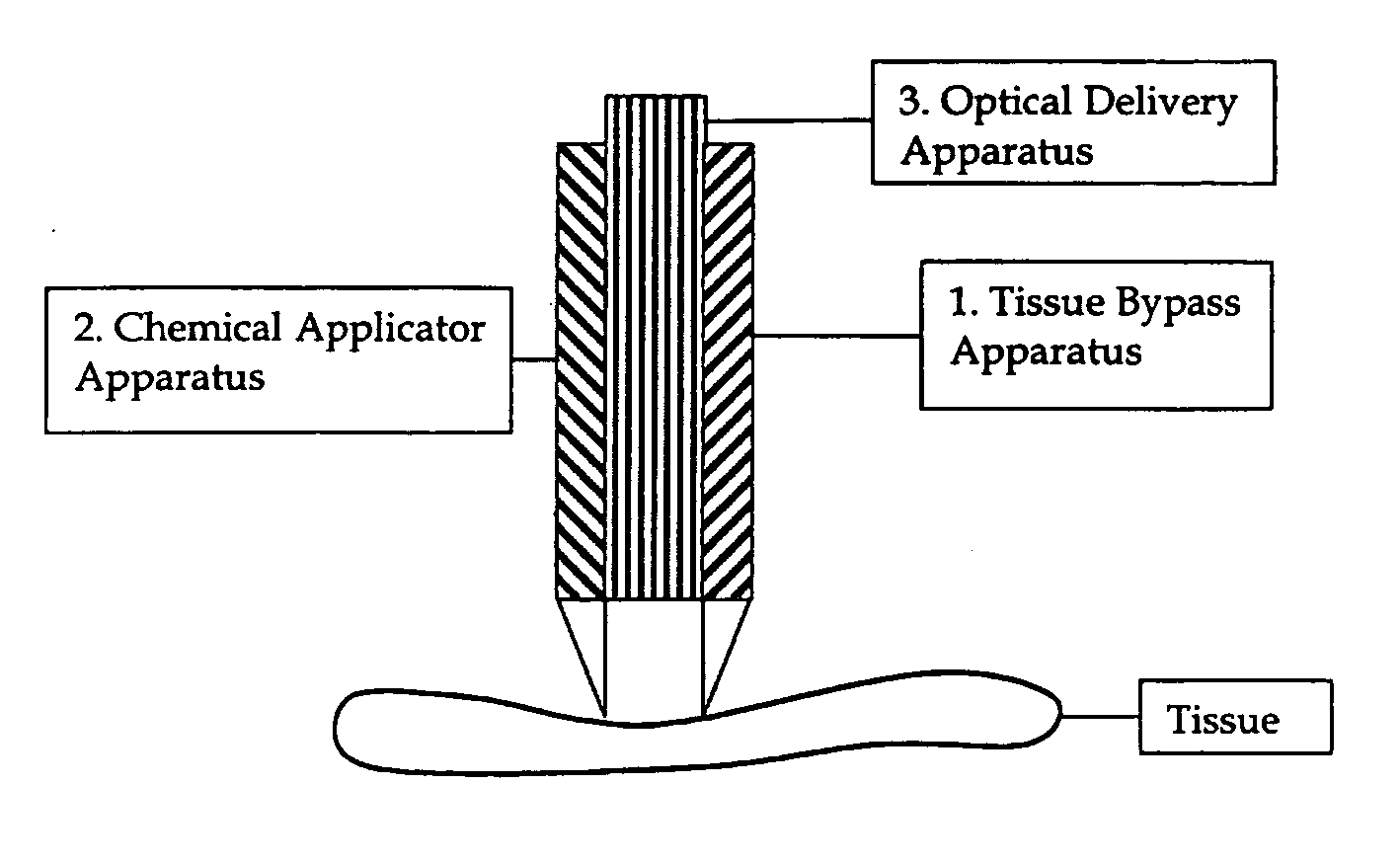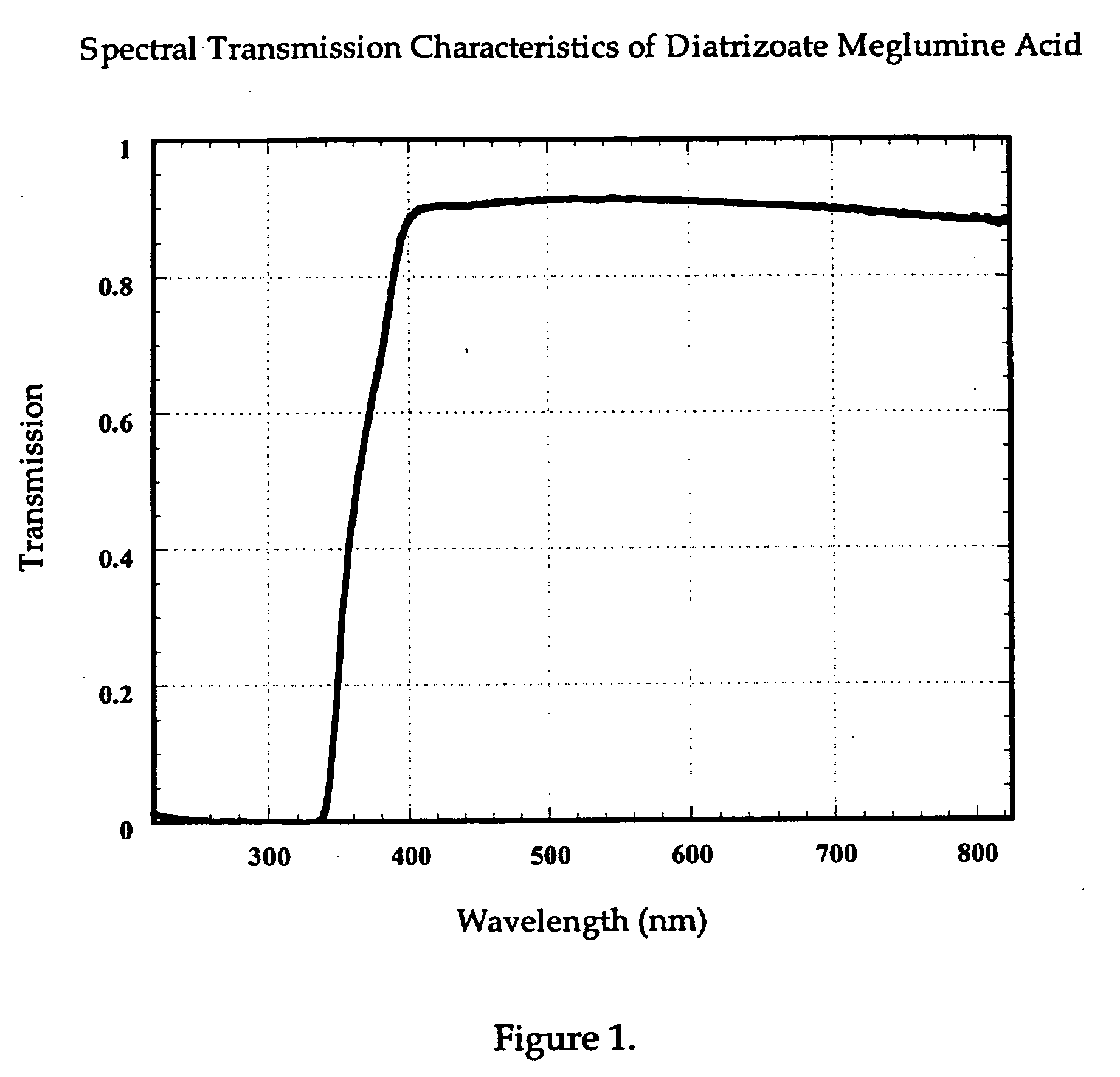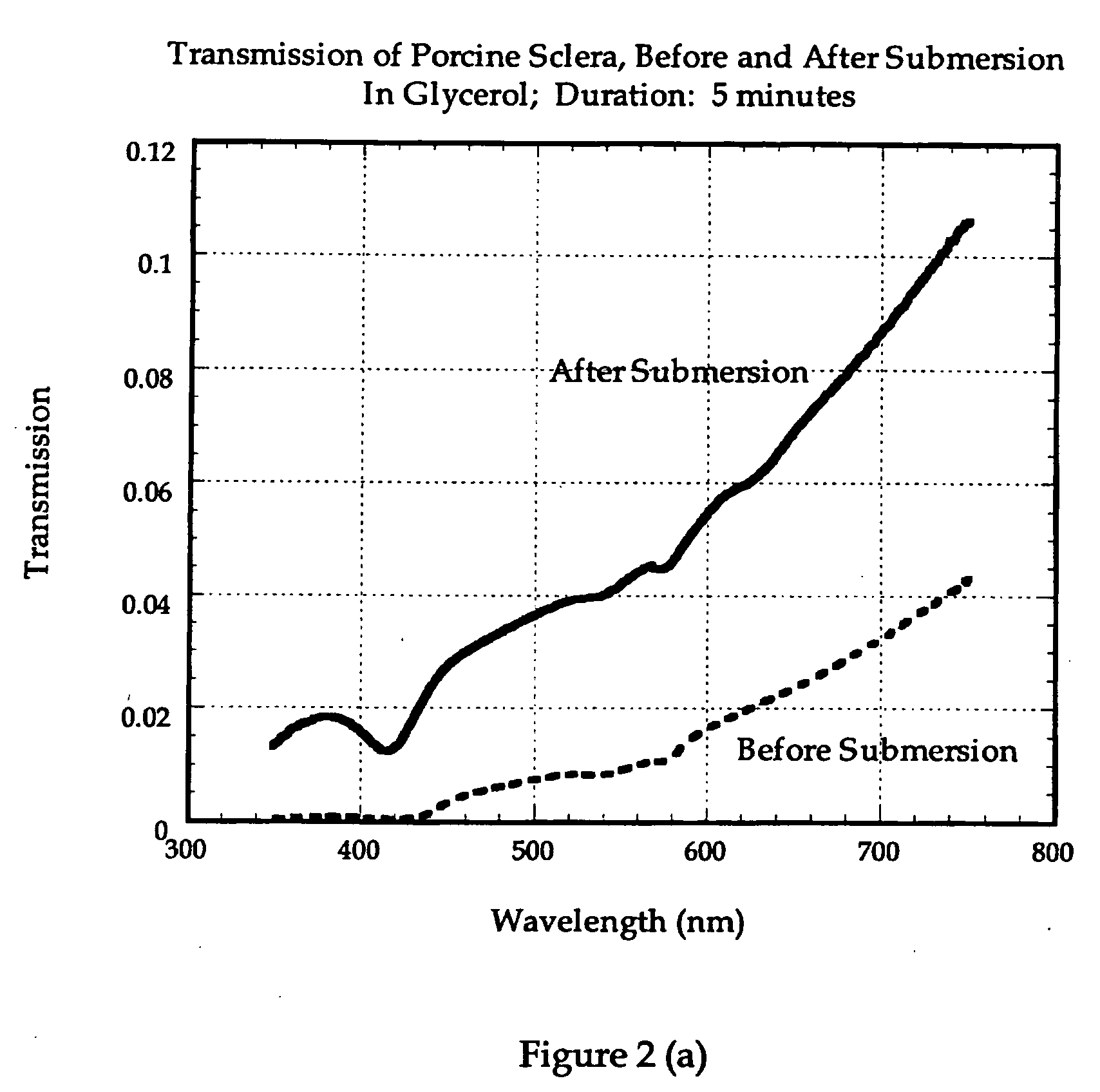Method and apparatus to enhance optical transparency of biological tissues
a biological tissue and optical transparency technology, applied in the field of biological tissue compositions and methods, can solve the problems of insufficient volume of clarifying agent to reach the target, abstract does not teach bypassing the superficial tissue layer, etc., and achieves the effect of avoiding thermal damag
- Summary
- Abstract
- Description
- Claims
- Application Information
AI Technical Summary
Benefits of technology
Problems solved by technology
Method used
Image
Examples
Embodiment Construction
[0023] Optical transmission through biological tissue is one of the major challenges of all optical diagnostic and therapeutic modalities which are intended to access structures underlying the tissue surface. In diagnostics (e.g., imaging tissue structures with microscopes) the object is to obtain a clear imageof imbedded structures, or signature optical information (e.g., spectroscopic information) from analytes in the blood stream or within the composition of biological tissues. Such images or optical information are distorted due to the attenuation of light, which is transmitted through, or reflected from, the tissue specimens.
[0024] In therapeutics (e.g., laser treatment of pigmented and vascular lesions) the goal is to selectively cause thermal necrosis in the target structures, without compromising the viability of surrounding tissues. The highly scattering medium of biological tissues, however, serves to diffuse the incident light, and causes thermal damage to tissues surrou...
PUM
 Login to View More
Login to View More Abstract
Description
Claims
Application Information
 Login to View More
Login to View More - R&D
- Intellectual Property
- Life Sciences
- Materials
- Tech Scout
- Unparalleled Data Quality
- Higher Quality Content
- 60% Fewer Hallucinations
Browse by: Latest US Patents, China's latest patents, Technical Efficacy Thesaurus, Application Domain, Technology Topic, Popular Technical Reports.
© 2025 PatSnap. All rights reserved.Legal|Privacy policy|Modern Slavery Act Transparency Statement|Sitemap|About US| Contact US: help@patsnap.com



